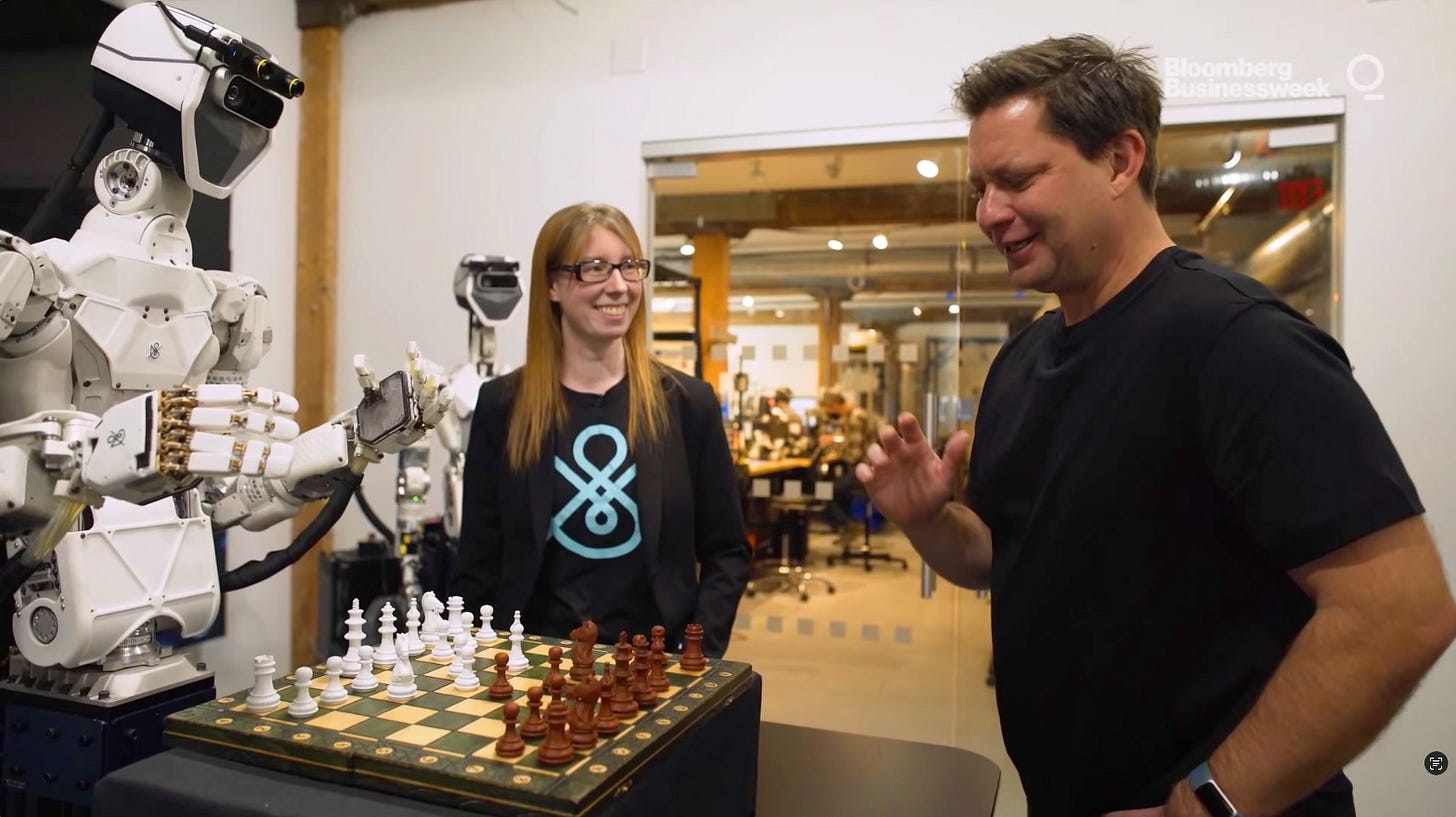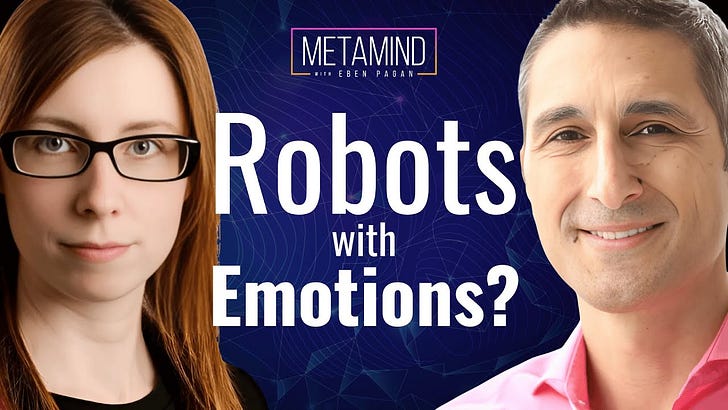I am really happy to share this very special interview by Ashlee Vance, one of the most respected technology journalists of our time. His podcast on Nirvanic, “Consciousness in the Quantum Realm” is now public. I highly encourage you to watch it!
Ashlee is a New York Times best-selling author, a biographer of Elon Musk, a former Bloomberg journalist, and the new founder of Core Memory, a “sci-tech” media company. He also recently produced Netflix’s Don't Die —a longevity film about tech mogul Bryan Johnson. So he’s an amazing tech insider to say the least!
Ashlee and I go way back—he’s made not one, but two mini-documentaries about my previous robotic startups, Kindred and Sanctuary AI, the latter of which is screenshotted below.
There’s an amazing coincidence there too! My hand-built Kit Cat “cat-robot” that I’m now using to test Nirvanic’s theory of quantum conscious agency was shown in one of those early documentaries. Here’s that same quadruped cat in 2018 versus now.
Suzanne’ hand-built cat-bot in 2018 that recently got saved from the recycling bin to be used for Nirvanic’s consciousness tests in 2025. Left image: Bloomberg News. Right image: Core Memory.
A lot has changed from those early robot tests to today. At Kindred in 2014, we had VR, sensors, and the idea that we could control robots in real-time, like something out of Ready Player One. We thought, if people could teleoperate robots and generate training data, over time, the AI could learn to do tasks autonomously. It turned into a lucrative warehouse-robot system and our tech startup was sold to a UK grocery chain for $262 million USD.
That idea evolved further in humanoids at Sanctuary AI, as it did across the entire robotics industry. And while great progress has been made in automating certain kinds of tasks, I have yet to see anything close to a robot with a spark of life —a self-evident conscious awareness that might allow a robot to adapt to any novel scenario, have experiences, and know the consequences of its actions.
If we did, maybe we’d see a lot more humanoid robots in our cities and daily lives. A typical American home is the ultimate AGI test: kids, pets, and ever-changing circumstances. The industry is pouring billions into solving this problem. NVIDIA, Figure AI, and others believe that by piggybacking off LLMs and multimodal models, robots will gain general intelligence.
But I have my doubts.
“It might work,” I told Ashlee, “but the amount of data required is ridiculous.” Language models work with text, but a robot needs to integrate motors, sensors, vision, and sound. A system that predicts across all these modalities will be exponentially larger than those used in today’s LLMs.
So, what is missing? I believe the answer lies in consciousness.
Consciousness isn’t just complex reasoning; it’s subjective experience. It’s that hyper-awareness when you face a brand new learning task, like driving a car for the first time. You had maximum alertness, I bet!
We presently don’t build that kind of intuitive processing into AI. Instead we’re engineering fantastic unconscious learning systems. “We need to flip that on its head,” I told Ashlee. With life, I believe consciousness evolved before learning. We likewise need to put consciousness at the very core of robot minds.
That’s why at Nirvanic, we’re looking to quantum computing as the missing piece. Superposition, entanglement and the measurement process, appear to mirror the way we make decisions —how we integrate colossal amounts of sensory data, consider multiple possibilities, and with executive function choose a course of action. It’s not scientifically proven, but our tests this year may provide insights. We have a fascinating experiment in development. I’ll share more about that soon.
This is why I started Nirvanic: to advance the science of consciousness through practical experimentation. We’re aiming to put quantum computation inside robot minds. Our robots aren’t just running classical neural nets—they’re integrating quantum systems to make decisions in real-time.
“Are you selling consciousness?” Ashlee jokingly asked me. Well it’s more of a new kind of software to help robotics achieve generalization. Right now, we’re doing R&D in this direction, and it is a greenfield of innovation.
“When I think about machine intelligence, I tend to be optimistic,” I told him. Despite people grumbling about the downsides of AI, they are still voting with their wallets. They’re buying ChatGPT subscriptions, and my guess is, they’ll one day buy conscious robots that will be our loyal friends, co-scientists, and co-workers. 🤖
Enjoy the podcast!
Suzanne










